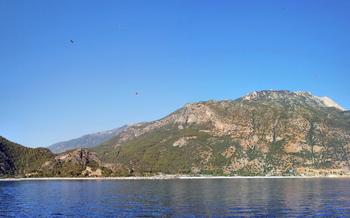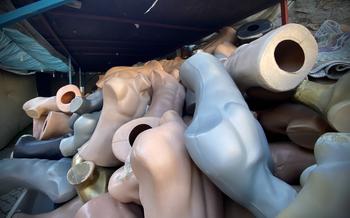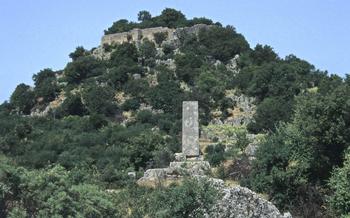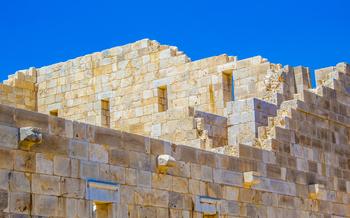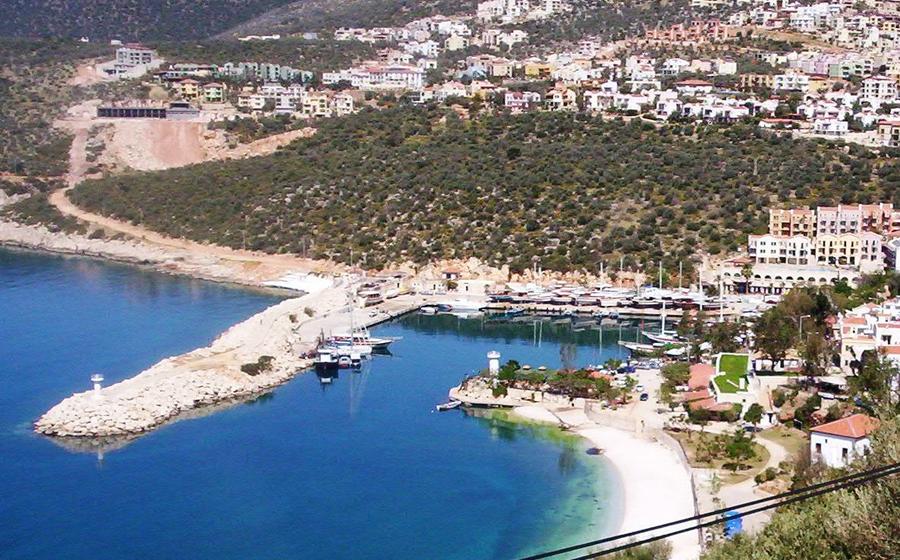
Sidyma Ancient City
- Historical Significance
- Location and Accessibility
- Preservation and Restoration Efforts
- Unveiling the Ruins
- Exploring the Theater
- Unearthing the Necropolis
- Trekking Through History: Hiking Trails
- Panoramic Views: The Acropolis
- Harnessing Nature's Power: Ancient Water Systems
- Glimpsing Daily Life: Domestic Structures
- Exploring the Museum
- Interactive Learning: Educational Programs
- Capturing Memories: Photography Tips
- Insider Tip: Unveiling Hidden Gems
Historical Significance
Sidyma Ancient City, nestled in the picturesque region of Kalkan, Turkey, holds immense historical significance as a prominent port city within the Lycian League. Its strategic location along the Mediterranean coast made it a crucial hub for trade and commerce, connecting diverse cultures and civilizations. Sidyma's rich history is intricately woven into its well-preserved ruins and artifacts, offering visitors a captivating glimpse into the grandeur of its past. Notably, the city played a pivotal role in the Lycian League's resistance against Alexander the Great's forces, showcasing its fierce independence and resilience. Sidyma's legacy continues to inspire and fascinate, inviting travelers to delve into the depths of its ancient heritage.
Location and Accessibility
Sidyma Ancient City is situated approximately 25 kilometers northeast of Kalkan, a picturesque town on Turkey's Turquoise Coast. Visitors can conveniently reach Sidyma by car, taking the scenic route that winds through the Taurus Mountains and offers breathtaking views of the surrounding landscape. The drive from Kalkan takes around 45 minutes to an hour, depending on traffic conditions.
Alternatively, travelers can opt for public transportation, with regular buses departing from Kalkan bus station to nearby Kas. From Kas, visitors can transfer to local buses or taxis to reach Sidyma. The journey by public transportation may take longer, but it provides a budget-friendly option for exploring the ancient city.
Upon arrival, visitors will find the entrance to Sidyma Ancient City clearly marked with signage. The site is open to the public daily, with a modest entrance fee. As you enter the ancient city, you'll be greeted by a sprawling expanse of ruins, remnants of a once-thriving metropolis that played a pivotal role in the history of the Lycian League.
Preservation and Restoration Efforts
Sidyma Ancient City has undergone several preservation and restoration efforts over the years to protect and enhance its historical significance. The Turkish government, in collaboration with archaeological teams, has played a crucial role in safeguarding the site. Excavations and surveys have been conducted to uncover hidden structures and artifacts, while ongoing restoration projects aim to stabilize and conserve the remaining ruins. Local authorities have also implemented measures to prevent further deterioration caused by natural factors or human activities. By preserving Sidyma's heritage, these efforts ensure that future generations can continue to appreciate and learn from this ancient city's rich history and cultural legacy. Additionally, initiatives have been undertaken to promote awareness and encourage responsible tourism, ensuring that visitors can explore Sidyma in a sustainable manner while contributing to its preservation.
Unveiling the Ruins
Sidyma Ancient City presents a captivating array of ruins that offer a glimpse into its glorious past. The theater, a prominent feature, is a testament to Sidyma's rich cultural heritage. With a seating capacity of approximately 5,000, this magnificent structure once hosted theatrical performances, musical concerts, and civic gatherings. Its intricate acoustics and impressive stage design, adorned with columns and friezes, create an awe-inspiring atmosphere.
Beyond the theater, Sidyma boasts several temples that showcase the city's religious devotion. The Temple of Apollo, dedicated to the revered Greek god of music, poetry, and healing, stands as a testament to Sidyma's spiritual beliefs. Its well-preserved columns, pediment, and interior design provide valuable insights into ancient religious practices and architectural prowess.
The city walls, once a formidable defense mechanism, encircle Sidyma, offering a glimpse into its strategic importance. These towering fortifications, punctuated by gates and towers, protected the city from invaders and ensured the safety of its inhabitants. Their impressive construction, featuring massive stone blocks and intricate masonry, speaks to the engineering skills of the ancient Sidymeans.
Sidyma's ruins are not limited to these prominent structures. As visitors explore further, they will encounter a wealth of lesser-known remains, including residential buildings, workshops, and public spaces. These remnants of daily life provide a tangible connection to the past, allowing visitors to imagine the bustling streets and vibrant community that once thrived within Sidyma's walls.
Exploring the Theater
The theater in Sidyma Ancient City holds a significant place as a cultural and entertainment center, echoing with the voices of ancient performances. Constructed with precision and artistry, its seating rows gracefully curve around a spacious stage, accommodating hundreds of spectators. The acoustics within the theater are remarkable, allowing performers' voices to carry effortlessly throughout the venue.
In its heyday, this theater hosted a variety of performances, from theatrical plays to musical recitals, captivating audiences with tales of mythology, love, and adventure. The stage design features intricate carvings and decorative elements, reflecting the importance of the arts in ancient Sidyma. Today, visitors can still sense the vibrant atmosphere of the theater, imagining the lively performances that once took place within its walls.
Unearthing the Necropolis
Outside the bustling streets of Sidyma, a silent city of the dead awaits exploration. The necropolis, or ancient cemetery, lies just beyond the city walls, a poignant reminder of Sidyma's rich funerary customs and beliefs. Here, visitors can wander amidst rows of ancient tombs, each whispering tales of lives long past.
The necropolis is a treasure trove of archaeological discoveries, revealing the diverse burial practices of Sidyma's inhabitants. From simple rock-cut graves to elaborate chamber tombs, each resting place offers a glimpse into the lives and rituals of those who once called Sidyma home.
Among the most notable tombs is the Lycian rock tomb, its intricately carved facade depicting scenes from mythology and daily life. Inside, visitors can marvel at the well-preserved frescoes adorning the walls, offering a vibrant glimpse into the beliefs and artistic traditions of ancient Lycia.
The necropolis is not merely a place of somber remembrance but also a testament to the enduring power of human memory. By studying these ancient tombs, archaeologists and historians have gained valuable insights into the social structure, religious beliefs, and cultural practices of Sidyma's society.
As you explore the necropolis, take a moment to reflect on the lives that once unfolded within these stone walls. Each tomb holds a story, a testament to the enduring legacy of Sidyma's people.
Trekking Through History: Hiking Trails
Enrich your exploration of Sidyma Ancient City by embarking on a journey through time along its picturesque hiking trails. These trails, ranging from easy to moderate in difficulty, offer a unique perspective of the site and its stunning surroundings. Immerse yourself in the ancient landscape as you follow paths that wind through olive groves, past cascading waterfalls, and alongside ancient ruins.
Trails vary in distance and duration, catering to hikers of all levels. Choose a leisurely stroll along the riverbank trail for a relaxing experience, or challenge yourself with a more strenuous climb to the summit of the nearby hills, where breathtaking panoramic views await.
As you traverse these paths, you'll encounter hidden corners of the site, stumble upon ancient artifacts, and gain a deeper appreciation for the rich history that surrounds you. Don't forget your camera to capture the stunning scenery and unique moments along the way.
Panoramic Views: The Acropolis
Perched atop a hill overlooking Sidyma Ancient City, the acropolis stands as a testament to the strategic prowess of its ancient inhabitants. This fortified hilltop served as the city's last line of defense, providing a commanding view of the surrounding landscape. Its formidable walls, towers, and bastions speak to the importance of Sidyma's security, while its elevated position offered unparalleled vistas.
Ascending to the acropolis rewards visitors with breathtaking panoramic views that stretch far and wide. From this vantage point, the entire ancient city unfolds before your eyes, with its grid of streets, imposing temples, and well-preserved theater. The distant peaks of the Taurus Mountains form a majestic backdrop, while the shimmering Mediterranean Sea glimmers on the horizon.
Exploring the acropolis, you'll discover remnants of its defensive structures, including sturdy walls, strategically placed towers, and fortified gates. These fortifications not only protected Sidyma from invaders but also served as a symbol of its power and resilience.
Be sure to bring your camera to capture the stunning views from the acropolis. The golden hues of sunrise or sunset cast a magical glow over the ancient ruins, creating a picture-perfect moment that will forever etch Sidyma's grandeur into your memories.
Harnessing Nature's Power: Ancient Water Systems
The ancient inhabitants of Sidyma demonstrated remarkable ingenuity in managing water resources. They developed sophisticated water systems that ensured a reliable supply for domestic, agricultural, and religious purposes. These systems included:
-
Cisterns and Reservoirs: Sidyma's inhabitants constructed numerous cisterns and reservoirs to collect and store rainwater. These underground structures were carefully engineered to prevent water loss through evaporation or seepage.
-
Aqueducts: The city was connected to a network of aqueducts that transported water from distant springs and rivers. These aqueducts were marvels of engineering, often traversing challenging terrain and utilizing gravity to ensure a constant flow of water.
-
Fountains: Public fountains were strategically placed throughout the city, providing residents with easy access to fresh water. These fountains were not only functional but also served as decorative elements, enhancing the city's aesthetics.
These water systems were essential for Sidyma's survival and prosperity. They allowed the city to flourish even in arid conditions, supporting a growing population and agriculture. Visitors to Sidyma can still observe remnants of these ancient water systems, such as well-preserved cisterns and sections of aqueducts, which stand as testaments to the city's engineering prowess.
Glimpsing Daily Life: Domestic Structures
As you wander through the ruins of Sidyma Ancient City, you'll encounter various domestic structures that offer a glimpse into the daily lives of its inhabitants. These structures, ranging from modest homes to bustling shops, provide valuable insights into the urban fabric and social dynamics of the city.
The houses in Sidyma typically featured a central courtyard surrounded by rooms for various purposes. These rooms, often decorated with intricate mosaics and frescoes, served as living spaces, bedrooms, and kitchens. The courtyards provided a private outdoor area for relaxation, cooking, and household chores.
Shops and commercial establishments lined the city's streets, catering to the needs of the local population and visitors alike. These shops, often specializing in specific goods or services, displayed their wares in front or within their premises. From pottery and textiles to metalwork and jewelry, the variety of goods available reflects the vibrant economic activity of Sidyma.
By exploring these domestic structures, you'll gain a deeper understanding of the daily routines, social interactions, and economic activities that shaped the lives of Sidyma's ancient residents. These remnants of the past offer a tangible connection to the city's rich history and the people who once called it home.
Exploring the Museum
The Sidyma Museum, located near the ancient city, serves as a treasure trove of artifacts and exhibits that shed light on the rich history and culture of Sidyma. Within its walls, visitors can embark on a journey through time as they explore a diverse collection of relics, including intricately carved sculptures, fragments of pottery that tell tales of everyday life, and inscriptions that provide glimpses into the thoughts and beliefs of the ancient inhabitants.
A highlight of the museum is the impressive collection of statues and busts that depict various deities, rulers, and notable figures from Sidyma's past. These sculptures offer a glimpse into the artistic prowess and craftsmanship of the ancient artisans and provide insights into the religious and cultural beliefs of the time.
Another fascinating exhibit showcases a variety of pottery, ranging from simple household items to elaborately decorated vessels. These artifacts not only reveal the daily lives and customs of the Sidyma people but also provide valuable information about their trade and economic activities.
The museum also houses a collection of inscriptions, including stelae, tablets, and fragments of decrees, which shed light on the political, social, and legal aspects of Sidyma's society. These inscriptions provide valuable historical records and offer insights into the governance and administration of the ancient city.
Visiting the Sidyma Museum is an enriching experience that complements the exploration of the ancient city itself. Through its collection of artifacts and exhibits, the museum helps visitors gain a deeper understanding of the rich cultural heritage and fascinating history of Sidyma.
Interactive Learning: Educational Programs
Enhancing the visitor experience at Sidyma Ancient City are educational programs and guided tours that bring the site's history and significance to life. These programs offer a deeper understanding of the ancient city's culture, architecture, and daily life. Visitors can embark on guided walks led by knowledgeable experts who provide insights into the site's features and uncover hidden stories. Workshops and lectures delve into specific aspects of Sidyma's history, such as its role in the Lycian League or its religious beliefs. By participating in these educational programs, visitors gain a richer appreciation for the site's importance and leave with a lasting impression of its grandeur.
Capturing Memories: Photography Tips
For photography enthusiasts, Sidyma Ancient City offers a treasure trove of opportunities to capture stunning images. The best time to visit for photography is early morning or late afternoon, when the warm, golden light casts a magical glow over the ruins. Experiment with different angles and compositions to showcase the site's grandeur. Try capturing the theater from a low angle to emphasize its impressive stage, or climb to the top of the acropolis for a breathtaking panoramic shot. Don't forget to look for hidden details like intricate carvings or colorful mosaics that add depth and character to your photographs. Whether you're a seasoned pro or a beginner with a passion for capturing history, Sidyma Ancient City will provide you with endless opportunities to create lasting memories through photography.
Insider Tip: Unveiling Hidden Gems
Beyond the main attractions, Sidyma Ancient City holds a hidden gem that often goes unnoticed by visitors. Tucked away amidst the ruins, a small, unassuming building stands as a testament to the city's rich history. This is the ancient olive press, a vital part of Sidyma's economy in ancient times. Visitors can marvel at the well-preserved olive press machinery, including the massive stone basin and the press mechanism. Imagine the bustling activity that once took place here, as farmers brought their harvest to be transformed into valuable olive oil, a staple of the Mediterranean diet and a source of wealth for the city. Discovering this hidden gem offers a unique glimpse into Sidyma's agricultural heritage and the daily lives of its inhabitants.



